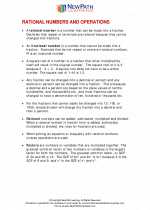Diagonals
In geometry, a diagonal is a line segment that connects two non-adjacent vertices of a polygon. Diagonals are commonly found in polygons such as triangles, quadrilaterals, pentagons, hexagons, etc. Understanding the properties and relationships of diagonals in different polygons is important in geometry.
Properties of Diagonals in Different Polygons:
1. Triangle: A triangle has no diagonals since all its vertices are adjacent to each other.
2. Quadrilateral: A quadrilateral, such as a square or a rectangle, has two diagonals. The diagonals of a square are congruent and bisect each other at right angles. The diagonals of a rectangle are also congruent, but they do not bisect each other at right angles.
3. Pentagon, Hexagon, and other Polygons: The number of diagonals in polygons with five or more sides can be found using the formula: D = n(n-3)/2, where n is the number of sides. For example, a pentagon has 5 diagonals, a hexagon has 9 diagonals, and so on.
Applications of Diagonals:
1. Area of Polygons: Diagonals can be used to calculate the area of certain polygons, such as using the formula 0.5 * d1 * d2 for a rhombus, where d1 and d2 are the lengths of the diagonals.
2. Internal Angles: In some polygons, the diagonals create additional triangles within the shape, affecting the internal angles and providing a way to calculate them.
Study Guide:
1. Understand the definition of a diagonal in geometry.
2. Learn the properties of diagonals in different polygons, including triangles, quadrilaterals, and polygons with five or more sides.
3. Practice using the formula to calculate the number of diagonals in polygons with five or more sides.
4. Explore the applications of diagonals in calculating area and understanding internal angles of polygons.
.◂Math Worksheets and Study Guides Eighth Grade. Rational numbers and operations

 Worksheet/Answer key
Worksheet/Answer key
 Worksheet/Answer key
Worksheet/Answer key
 Worksheet/Answer key
Worksheet/Answer key
